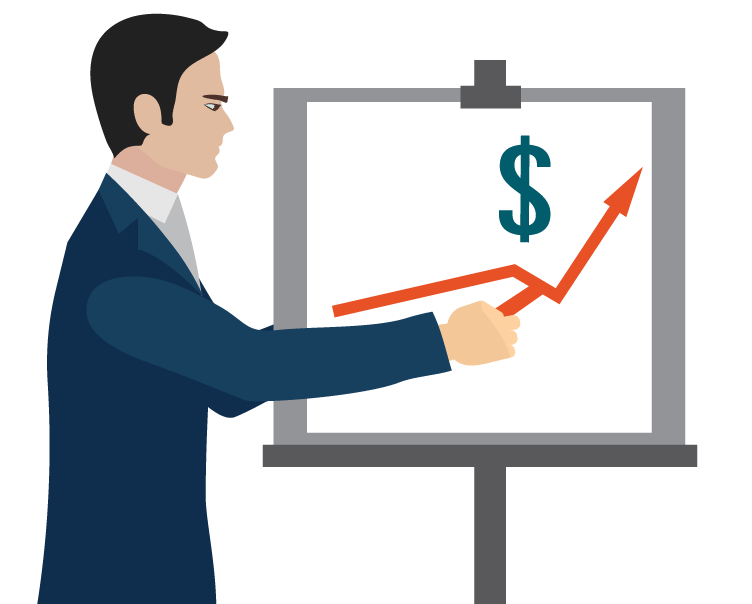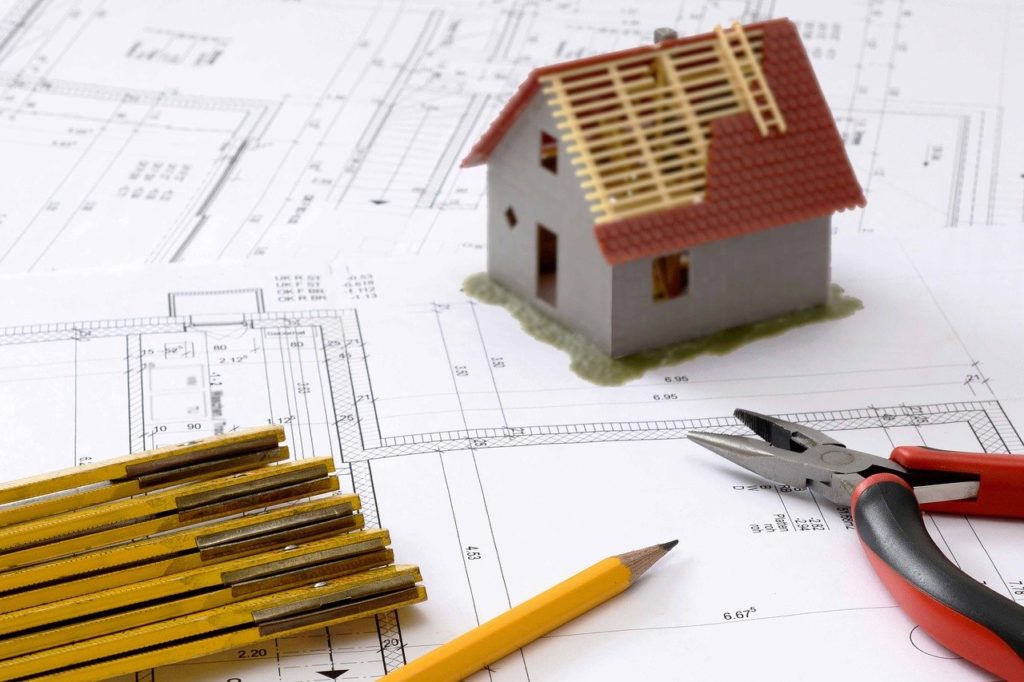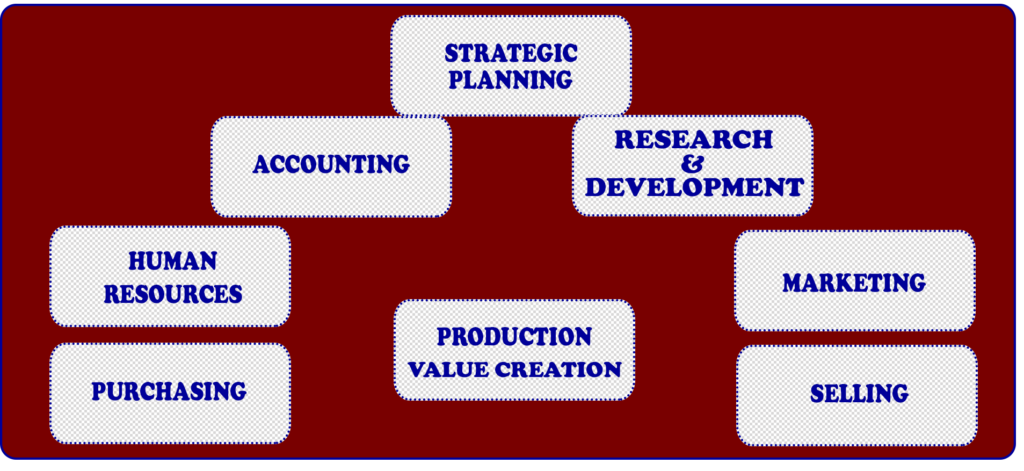I am sure you heard many times: “You need a Business Plan.” But I guess you also wondered, what exactly a business plan is, how it helps you and where you get it?
In many cases people are told, that they need a business plan in order to get some a credit or venture capital. But this is only a tiny part of the truth.

Image by courtesy of MediaCloudPro
The full and hard truth is: You don’t have a chance to build a business without a business plan. And nobody wants to provide capital for a doomed project.
Without a plan, you are already lost
Think about it that way: If you start a journey, you need a plan: You need to know, where you want to go. The next questions: How can I reach there? Which transportation is suitable? Do I travel by car, train or plane? Or a combination of all? Will I need a hotel accommodation on the way? And last, but not least: How much does it cost?
If you leave home without a plan, you will be probably back home after a few hours. Afterwards you decide, if this excursion was a humiliating failure, or you just did a walk.
A plan will not only map out the way and the steps you need to take. It will also help you to realise early, when something does not work as expected. You will see early enough that your train is late, and the next connection will be gone. This gives you the opportunity to book in time a hotel room for the night and arrange a different connection for the next morning.
Building a business is like a journey
To build a successful business, you need to follow a sequence of steps. And it is not enough to go through all steps, you need to do them in the right order. You need a business plan to get this right.
Your first Business Plan
Your first business plan will describe, how your business will function at the beginning, and it will map out the steps you need to undertake to reach that initial stable stage.
So, how do you dream up such a plan?
Defining the Goal
As a first step you describe how the business will be looking, and more importantly how it will function. You describe
- How your business will make the world a better place (the mission)
- How your business create value for your customers
- The products you will sell to monetise the value you create.
- Your process to create value and package it into products
- Where you find your customer and how you connect to them
- How you sell your products
My advice for this stage: Keep the plan simple. Or better: Keep your business and your plan simple. There is no need to nail down every detail in this first description of your business.
The Backwards Planning Method
Using the backward planning method, you go step by step back from your desired outcome, until your reach your current situation.
The first step backwards means for our business plan to describe the day by day activities necessary for your business.
To find that out, describe the core functions and responsibilities in for your business. They include usually
- accounting and financial planning
- marketing and product development,
- production (value creation), sales and Human Resources
- purchasing
- strategic planning
As a further step you list the necessary resources to make each function work. They include
- the skills and people
- machinery and facilities
- supplies
A bit of spying and observation reveals how your competitors succeed, and what their costs and challenges are. Such information allows you now to ask a core question: “What and how can I do better than my competitors?”
Learning from your competitors is a true and proven method for success, although not every competitor wants to share his “secrets” with you.
Listing core functions and exploration the related best practices gives you a rough idea about the people you need to involve, the skills you need to acquire, the machinery you need to set up and the products and services you need to source. Armed with that information, you are ready for the next step.
Estimating Profitability of Your Business
Expenses
After you know the resources your business will need, you can now estimate the cost.
Here are some cost categories:
- you must pay for the people in your business – and don’t forget yourself
- the next cost block comes from buildings and machinery
- then you need to pay for all supplies and services your business uses to create value
- finally, sales and distribution of your products and services incur expenses
And I add as a friendly reminder:
- your government will demand tax
Estimate your cost for each category and use the results to project the total costs your business will incur.

Revenues
Your business needs to attract revenues, and of course the sum of the revenues must be bigger than the sum of your costs.
Some market research will inform you, which prices you can realise for your products, and how many units you can reasonably expect to sell. Knowing the price, you can charge and the number of units you can expect to sell at that price point, you can calculate the revenues you can expect. Revenue projections substantially higher than costs point to a sustainable business.
But in case your first raw budget suggests that your revenues would struggle to match your costs, you should return to your mission statement and value proposition. You should consider modifying both and look for more efficient ways to deliver your value to the market.
After reaching the point, where your business plan points to sustainable profitability, you are ready to start the next step of your planning process.
Plan How to Set Your Business Up
You are now the proud owner of a plan outlining how your business will function, once you have built it. If you want to use the project of building a house as analogy, you just returned from the architect with a plan showing how the house will look and function when it is ready.

But you need still a plan outlining all the steps of the construction process. The cellar must be ready before you can build the walls. The roof and windows must be in place, before you can add electricity and paint the walls. Based on that sequence, you need to ensure that all materials arrive at the right time at the construction site, and the workers show up when it’s their turn.
Determining, sequencing and organising the tasks necessary to build a house as envisioned in the plan is done through a project plan. And the same goes for your business: The process of building it up is different from the process of running it. If you want to avoid failure, you must make a detailed project plan for the process of setting up your business.
Setting up your business can be fast and straightforward, or it can be quite complex and take some time, depending on the nature of your business. But in general, you must set up a handful of processes:

The Core Business Functions
Human Resources
There is no way to do a business alone, because the very point of a business is bundling and orchestrating activities of different people in a way that makes the whole greater than the sum of the parts. So, you must establish something like a human resources department.
Marketing
There must be marketing process. Marketing defines your target market segments in detail and prepares fine-tuned offers for the segments it decides to target.
The wider task of the marketing department is observing the broader market, as far as it is relevant for your business. It should map out opportunities for growth and improvements in your product line and raise red flags early enough when dangers and strategic changes arise.
In the online world people like to blur the line between marketing and sales, but this is wrong. I guess, there are just a lot of people out there, who are in fact selling, but prefer marketer as job description.
Production and Value Creation
You need to source the products you sell, either by producing them or by buying them. Most often a business buys component, adds value through a production department and then sells the result as different product. Setting up an efficient production process is one of the more complex tasks when you start a business.
A dealership is a special kind of business, which minimises or even completely skips production, and sells what others produce.
Purchasing
In any case, you need to set up a purchasing process, enabling you to buy all the supplies you need. Even if you plan to go it alone, you should create a process and set up a kind of process. Spelling out criteria what you buy, when and where. This will be a huge help, when it comes to keeping your money together and your mind focused.
Accounting
Then, of course, you need an accounting and controlling operation, tracking what you spend, the liabilities you incur and the revenue you generate.
Strategic Planning
And finally, you need people who hold the strings together. they watch all the information coming from the different departments, use them to spot dangers and opportunities, update and adapt the plans and lead the business into a bright future.
How to Build the Business According to Your Plan

Adding Skills and Building the First Team
Your startup doesn’t need to create for each function a department, and it is quite possible that one person covers more than one function. But all the functions need to be performed, otherwise the business will not work.
And in every case, you should right at the beginning of your business building process look for a partner. Otherwise the business could turn into a prison for you, leaving no space for your personal needs and your personal development. Nobody can be omnipresent, and even you can fall sick for a few days. Plan for a business that can survive without you.
It makes sense, if you avoid employing people for your first team. Instead, look for partners, and share the business ownership with them. They should bring in skills and money. You will need both, dearly. Partners don’t cost you cold cash in the startup phase of your business. And on top, skin in the game helps everybody focus the mind.
If you take in partners, it is a good idea to formalise the relationship between the partners right at the beginning. One way to do that could be incorporating the business and allocating shares and voting rights to your team members.
In your next step you need to allocate responsibilities for the core function of your business. The people responsible for each business should be able to set a time frame to build up their department, and to clarify in detail the initial capital investment needed in their part of the business.
Setting up a Timeline

Before your business can start to work, all the departments must be able to fulfil their basic tasks and work hand in hand. A certain sequence makes sense, when you build up such a system.
Research and Strategic Planning
You have done already a lot of strategic planning and research in the process of creating your business plan. Accordingly, this capacity should already be up and running.
Purchasing, Human Resources and Accounting
Next, you will start to spend money to add more skills and abilities to your business. To do that, you need a Human Resources department and a purchasing department. And both depend on proper accounting, so that you can always ensure that your money is spent the right way.
So, I would suggest setting up next the accounting, human resources and purchasing processes.
Marketing
Next comes marketing, developing the benefits you provide and the products you use to package and deliver the benefits to your customers.
Production and Sales
As soon as your offer and your products are defined with enough details, you start to set up the production department, where the value for your customers is created.
When production starts, sales must be able to function. Don’t underestimate the time needed to set up, test and optimise the sales processes. Finding, hiring and training the right salespeople takes also time. Therefore, you should start to build the sales processes as soon as the marketing department is able to provide the framework for the sales operation.
Now, that all functions are ready and nicely humming along, it’s time to open the doors with a powerful launch.

